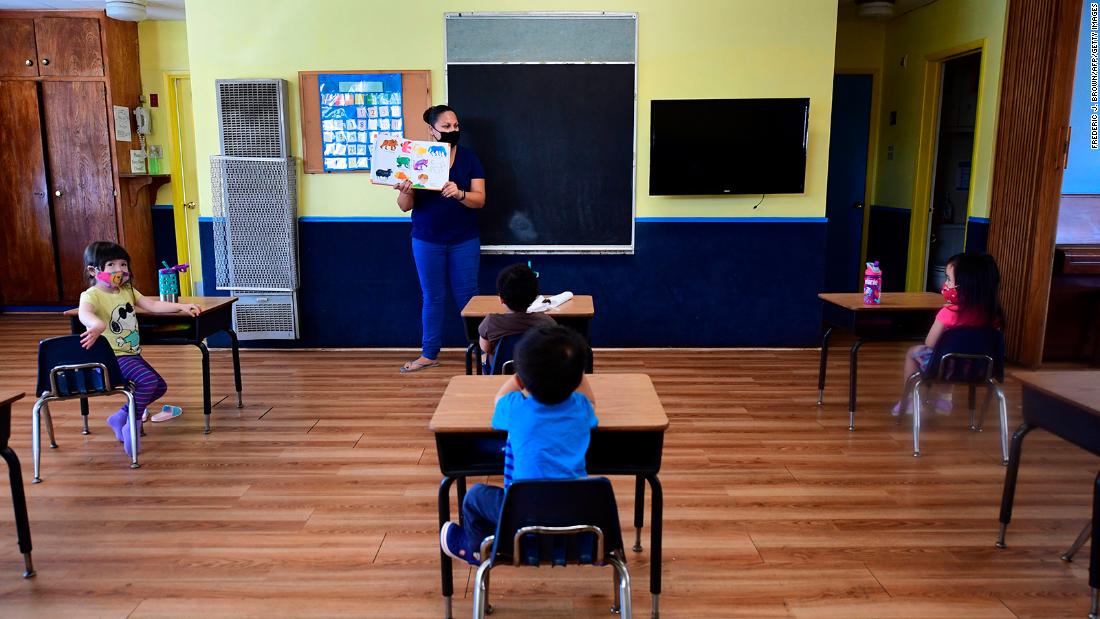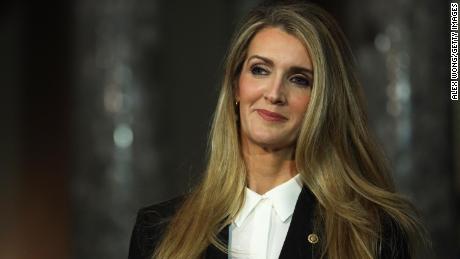Opinion: I love my students. I don’t want to die
For some schools, particularly in the South and West, “this fall” means a school year that usually starts a few short weeks from now, in August. I am an ESL teacher in New York City, where the school year starts a bit later, but that extra time won’t mean much if teachers and staff aren’t consulted about how to feel safe — or provided with the necessary support and supplies to be as careful as possible in preventing the spread of Covid-19.
We want to be there for the kids, especially now. But who will be there for us — the educators? The ones who, along with other school staff, are literally being asked to risk our lives so the economy could go back to normal?
With a fiscal crisis upon us, once again teachers are being called on to make things right. The essential educators of your children are being drafted — willingly or not — to serve during this pandemic. No matter where you live, why not ask a pool of educators for their ideas? Here’s mine: combine a limited in-person curriculum with online learning and stop pretending that there is a one-size-fits-all solution that will work for an entire state, much less the entire country.
First off, yes, students need to return to school in person in some way, especially the little ones. You cannot have a meaningful connection with your teacher if you’ve never met them in person and those face to face connections are irreplaceable. This might mean having staggered in-person orientations of classes and not returning to the classroom until teachers and students feel ready. Some school days must be virtual.
Schools that are already overcrowded cannot simply have classes in the cafeteria and gymnasium to allow for social distancing. Other facilities will need to be used if in-person teaching is adopted. Federally funded buildings such as libraries, community centers and unused government office buildings are potential alternatives to allow for students to have additional room. They can also be spaces to provide activities or childcare for students when they are not in school.
These changes need to be made before school starts. In addition, we cannot return without the necessary supplies, facilities and health care workers in place. Some students (and teachers) are traumatized by the dislocation and perhaps personal losses from the pandemic and will also need additional support before even attempting to return to a classroom. Mindfulness and meditation should be part of the curriculum.
Will teachers have to use their own money to ensure their own safety and that of others?
Meanwhile, not all changes are necessarily bad. Why not make this school year a time to assign more books written by Black Americans and other people of color? A post-Covid-19 classroom, in person and online, must surely invite discussion of Black Lives Matter; the protests have affected children and their parents and of course, the ravages of the pandemic have fallen disproportionately on Black and brown Americans.
The bottom line is that each school within each district will have to come up with what works best for them — this cannot be another top-down decision but a matter of working within the local communities to see what fits best. What schools need from the top is support, flexibility and money — not control. Just as cities are working to restructure police departments to include community input, we need to redesign schools to include the valuable insight that only classroom teachers can provide.
I understand that we are all desperate to go back to normal. But there is no normal anymore. The rules that were once in place no longer apply. We as teachers love your kids, but they are not ours, although we often think of them that way. Small children need love and affection and teachers simply cannot have them sit on their laps and make everything all right. We can’t wipe their noses or hug them, and we can’t provide for our own families if we are afraid and anxiety-ridden every day of the school year.
Perhaps the new normal means thinking of teachers in a new light. The parents among you have all had a glimpse these last few months of what our job entails. If you want us to continue doing it, it’s time for you and your elected officials to work with us to ensure that we are as safe and comfortable at school as you hope your children to be.
![]()






